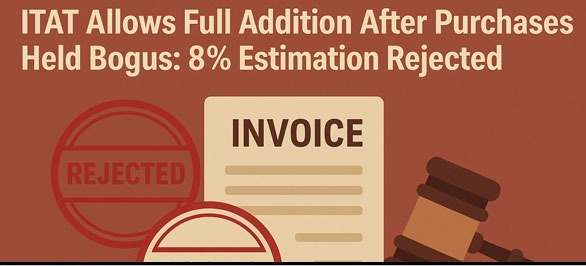K. Kannan, J.@mdashThe appeal is for enhancement of claim for compensation for a claimant, who had suffered amputation of four toes other than a big toe in one leg. He was a Clerk in HUDA and the evidence was that from Kurukshetra, he had been later referred to the hospital at Ludhiana where for a fracture of the shaft femur, he had been conservatively treated by traction and hospitalized for a period of S3 days. He had continued in his treatment and had to avail to 148 days leave from his office, the Tribunal had assessed the compensation at Rs. 1,30,000/- that included Rs. 5,000/- towards special diet and transportation and Rs. 60,000/- towards the disability. The learned counsel contends that the transportation expenses had not been properly assessed. The evidence, according to him, was that he had spent Rs. 1 lakhs towards transportation and special diet and that the visits subsequent to his hospitalization on many days had caused expenses to the tune of Rs. 1 lakhs.
2. While the issue of assessment of compensation for non-pecuniary heads like pain and suffering, loss of earning power and loss of amenities could be subject to certain variations in view of the subjective character of assessments, pecuniary compensation must as far as possible be brought through appropriate evidence. A certain amount of conjecture could be possible for illiterate persons, who may not know the value of documentary proof, but I cannot take the same excuse for a person, who is a Clerk in HUDA. If he had spent Rs. 1 lakhs for transportation from Kurukshetra to Ludhiana, I would understand that he had availed of several visits to the hospital from Kurukshetra through taxis or through private vehicles where he should have incurred the expenses towards the fuel and driving charges. An amount as high as Rs. 1 lakhs cannot be incurred without documentary proof. If the Tribunal had assessed only Rs. 5,000/- as going towards special diet and transportation, the justification could only be that the claimant did not produce what was essential to substantiate his plea. I have no better evidence to make a higher assessment and also give the benefit of my conjecture for the assessment for this head of claim. For a person, who had been hospitalized for 53 days and who had a long period of treatment that prevented him from returning to his office for nearly 4 months, an assessment of compensation of merely Rs. 5,000/- for pain and suffering seems inadequate. He had suffered an amputation of four toes of the right foot and he also had a fracture of the shaft of femur that must have literally confined him to bed and for a fracture while I would normally provide for about Rs. 7,500/-, I will award Rs. 25,000/- as compensation for pain and suffering for his long hospitalization and confinement to bed. The assessment of Rs. 60,000/- towards disability, I would understand as answering the issue of loss of amenities for a person, who had a stiffness of his knee, muscle weakness and a shortening of the lower limb by 1/2 inch as the disability certificate issued by the Medical Officer shows. I would, therefore, reassign the head of claim for compensation for disability as going towards the loss of amenities attendant to such disability.
3. The loss of earning capacity is invariably assessed in the context of how the disability impacts the earning skills. If it is merely an issue of a fracture or mal-union where the injured himself continues in the same employment, an assessment for loss of earning capacity need not be separately provided, particularly when an assessment is separately made for loss of amenities resulting from such disability. However, if there is a privation of organ, then there is a statutory basis for determination of loss of earning capacity. This has been provided under the provisions of the Workmen''s Compensation Act and they are also incorporated in Schedule-It of the Motor Vehicles Act as a guide for assessment of compensation for injuries. Even in cases where Schedule-H may hot be attracted, an amputation does not merely cause a cosmetic loss but also impairs a person''s functioning in several ways. The learned counsel for the Insurance Company would point out that the nature of duty which he was performing as a Clerk and he was being retained in the same employment. The attempt was, therefore, to show that the amputation did not result in loss of earning power. Amputation causes certain impairments which is more than a merely mal-union of an organ. If an assessment of an earning capacity is statutorily recognized, the retention in service in the same post shall not be a ground for denying such loss of earning capacity. This aspect of the effect of retention in service for a person, who suffers a privation of organ has been considered by this Court in FAO No. 3432 of 2009, decided on 29.09.2010 titled .New India Assurance Company Limited v. Smt. Santosh and others (2010) 160 P.L.R. 780. The relevant portion is as under-
In cases of injury, it is not merely the financial issue that the Courts look at but it also factors the loss of amenities to life, pain and suffering and several non-pecuniary damages. There is definitely a resultant loss of prospects of promotion and loss that is occasioned by the physical disability that a person carries. In a slightly different situation in The Management of
20. The Madras High Court posed the question in Lalithambika''s case (supra) whether an employer could be relieved of his liability to pay compensation by retaining a person in employment and providing for the same wages. It answered that the mere continuance of work does not disentitle a person from claiming compensation. There is also an opinion of the House of Lords that may be relevant to understand this concept. Bale v. William Hunts and Sons Limited 1912 A.C. 496 was the case of a workman, who was blinded in one eye. The defect was not visible and he was to have appearance as two eyed man. He had come to such a disability status when he had sustained an employment injury in which the defective eye had to be removed with the consequences that he could not get employment though physically he was as well as before. The House of Lords held that the incapacity of work included inability to work or in other words, mere is incapacity for work when a man has a physical defect which makes his working un-saleable in any market reasonably accessible to him. Applying the same logic, a person who has suffered an injury may not come by immediate loss if he is retained in the same employment and does not lose his job, but in his own salability elsewhere as a fresh recruit to a new employer, he may come by a serious handicap. That shall be a justification enough to provide for compensation in such types of cases.
4. The doctor''s certificate shows that the assessment of disability had been made under two heads: (i) for shortening of the limb and impairment of movements of the knee by 35% and the doctor has certified 22% as the disability arising from the amputation of four toes in a leg. The assessment does not appear to have any basis as far as the amputation of toes are concerned for, if the guidance for assessment of disability as prescribed by the Ministry of Law (OM No. 4-2/83 HW.IIL dated 6th August 1986, Ministry of Law as applied), it follows the same formula as prescribed under the Workmen''s Compensation Act in respect of the privation of the organs. Under the Workmen''s Compensation Act, the loss of four toes of one foot excluding the great toe is assessed at 9%. By no stretch of imagination could, therefore, the disability be assessed at 22%. Although the earning capacity and disability are different, even if the loss of the toes must be taken to have resulted in 22% loss of disability, I would apportion the loss of earning capacity at 9% in the manner that Workmen''s Compensation Act provides. The claimant was said to be earning Rs. 4,066/-. The total compensation is reassessed and tabulated as below:
| Sr. No. Heads of claim | Tribunal Amount (Rs.) | High Court Amount (Rs.) |
| Age: 39 Period of hospitalization: 53 days Occupation & income: Clerk, HUDA | ||
| 1. Loss of income | 20,000 | 20,000 |
| 2. Medical expenses: medicines | 40,000 | 40,000 |
| 2. Hospital charges Attendant charges Special diet } | 5,000 | 5,000 |
| 3. Transport } | ||
| 4. Pain & Suffering- | 5,000 | 25,000 |
| 5. Loss of earning capacity | 65,869.20 Income x % of loss (4,066 x 9% x 12 x 15) of earning power x multiplier | |
| 6. Loss of amenities | 60,000 Total 1,30,000 | 60,000 by disability. 2,15369.20 |
5. The amount in excess over what has been determined by the Tribunal already, shall attract interest at 6% from the date of petition till date of payment. The liability shall be in the same manner as determined by the Tribunal.
6. The award is modified and the appeal is allowed to the above extent.

